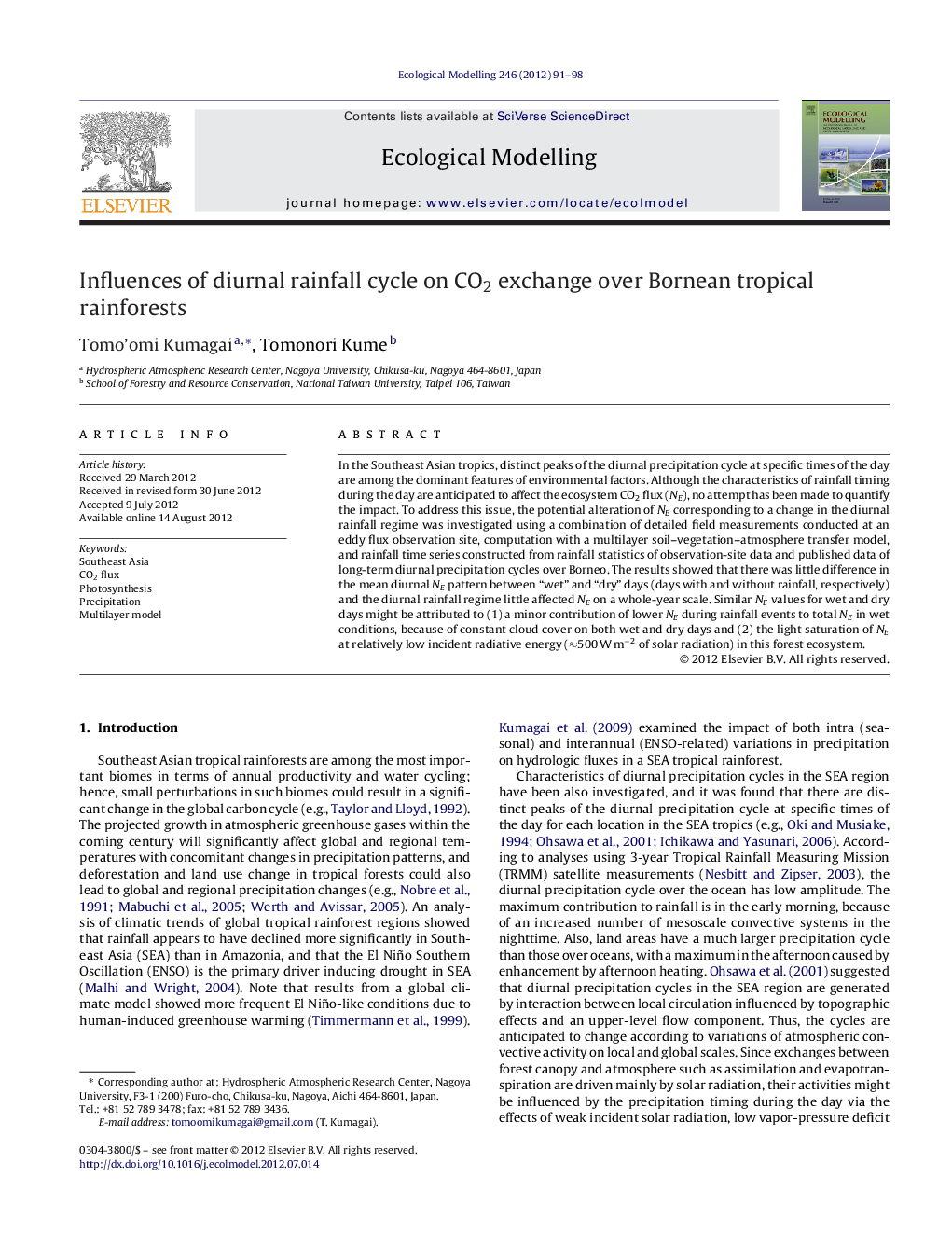| Article ID | Journal | Published Year | Pages | File Type |
|---|---|---|---|---|
| 4376294 | Ecological Modelling | 2012 | 8 Pages |
In the Southeast Asian tropics, distinct peaks of the diurnal precipitation cycle at specific times of the day are among the dominant features of environmental factors. Although the characteristics of rainfall timing during the day are anticipated to affect the ecosystem CO2 flux (NE), no attempt has been made to quantify the impact. To address this issue, the potential alteration of NE corresponding to a change in the diurnal rainfall regime was investigated using a combination of detailed field measurements conducted at an eddy flux observation site, computation with a multilayer soil–vegetation–atmosphere transfer model, and rainfall time series constructed from rainfall statistics of observation-site data and published data of long-term diurnal precipitation cycles over Borneo. The results showed that there was little difference in the mean diurnal NE pattern between “wet” and “dry” days (days with and without rainfall, respectively) and the diurnal rainfall regime little affected NE on a whole-year scale. Similar NE values for wet and dry days might be attributed to (1) a minor contribution of lower NE during rainfall events to total NE in wet conditions, because of constant cloud cover on both wet and dry days and (2) the light saturation of NE at relatively low incident radiative energy (≈500 W m−2 of solar radiation) in this forest ecosystem.
► The diurnal rainfall regime has little effect on the mean diurnal CO2 flux pattern. ► This small effect is attributed to there being constant cloud cover. ► CO2 flux saturation at lower light results in similar values, regardless of weather.
